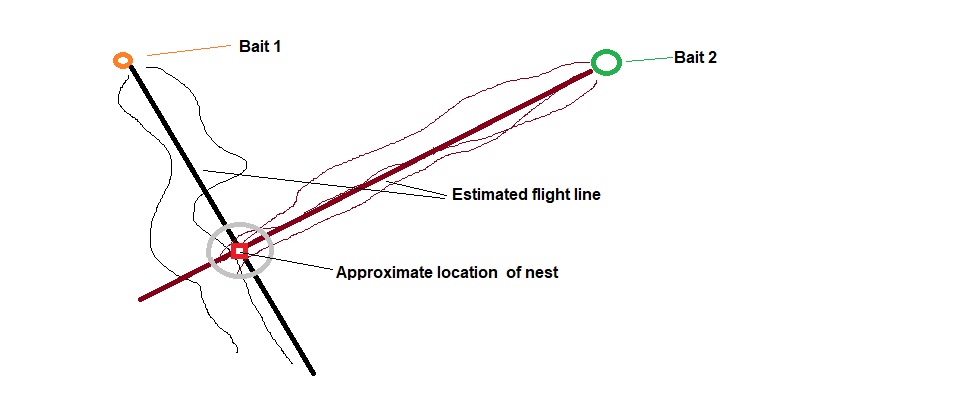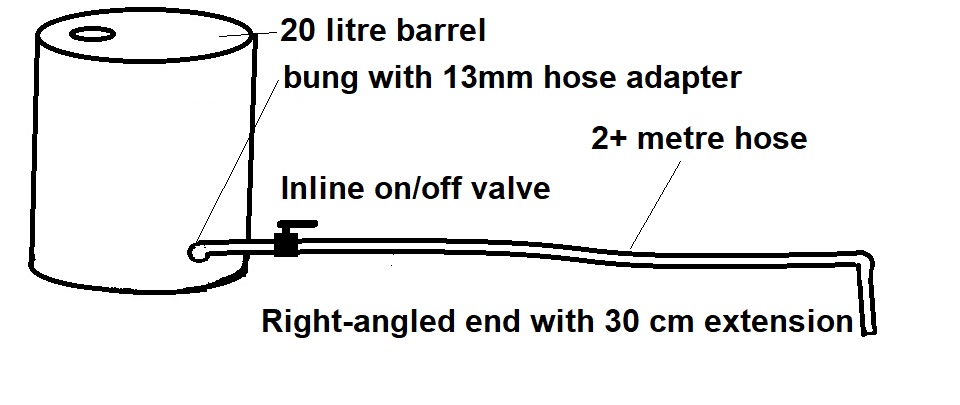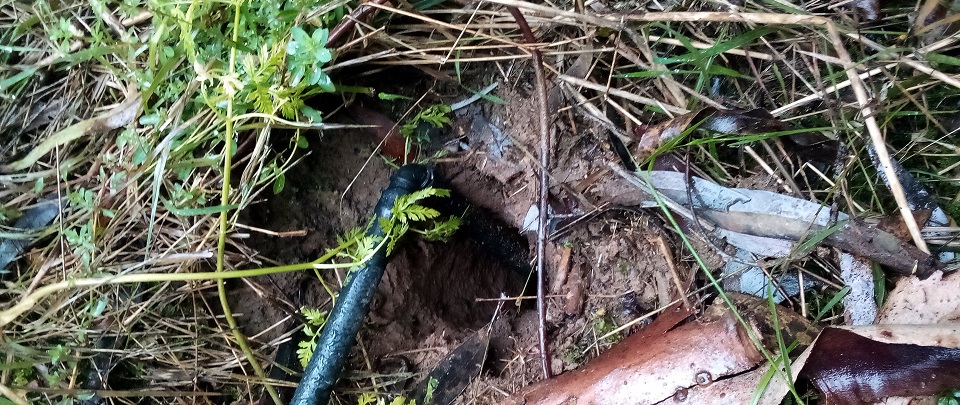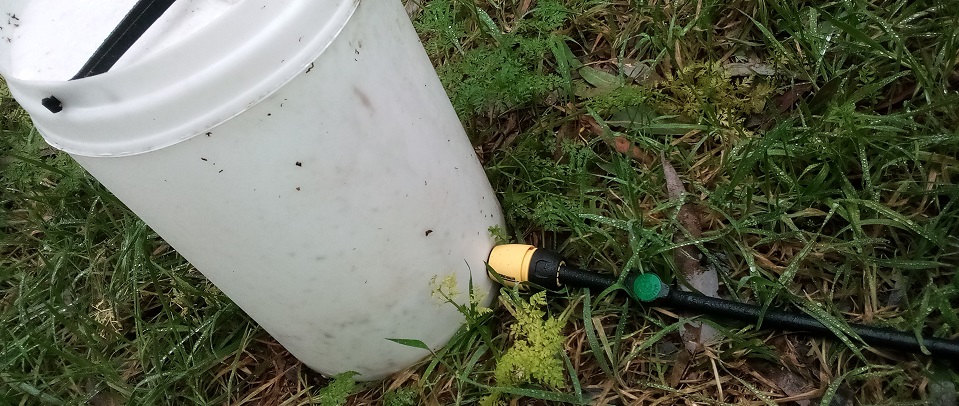Us vs Wasps
When I was a teenager the Moscow Circus visited Australia. As a family, we caught the train into Melbourne then walked through the parks to the circus. It was really hot, and, a rare event, my parents bought us cans of softdrink. As we milled around, opened the cans, a European Wasp buzzed in and went for the opening of a can. In it went and my father binned it rather than let anyone drink out of the can.
It was an unusual thing then, and now they are everywhere.
Early in summer you see a few, but as the summer progresses and the nests build the numbers escalate to the point where you can be swarmed if you are outside with food… or just outside.
I really dislike them. I actively look for their nests and eradicate them. I've written about them before in this blog.
Its interesting to see that if you can find the nest early in the season, the wasps are protective, but pretty easy to outsmart. Later in the season their behaviour changes, and they become more aggressive, more pro-active, and much more dangerous.
So, I have two strategies for wiping them out. And maybe a third…..
Strategy One: Find the nest
I think if you set up a food source, that lasts a day or more, like, say, remainders of a roast chicken carcass, wasps will find it and tell the nest, and then a stream of wasps will travel back and forth stripping the treasure pile. In warm weather a chicken carcass might have 20 wasps working in it at any one time. The wasps fly back and forth from the food to the nest.
So, if you set it up on a high point, you can sit below out of the flight path and watch them. A high point could be a 2.4 metre star picket, or a tree branch in a paddock. One year I parked the bait in a dirt pile that was on a bit of a hill.
It takes awhile to get your eye in, but after a time you can see them enough to work out the approximate line they are travelling. I've found if you do it late in the afternoon on a sunny day, the low, setting sun sends out a sideways light that illuminates the wasps and makes it easier to follow their path.
Wasps don't fly straight, so even when you can see them coming and going, it can be hard to work out the true flight vector. One trick that helped me was to slowly move around the bait in 30 degree moves, every few minutes. As you complete the circle you get a feel for where most of the traffic is. Its all a bit fluffy, but it works for me.
From there I follow the line away from the bait. The line isn't deadly-accurate, but in most cases when I do find the nest its within 5-10 metres of the imaginary line I was following. But that's a huge area to cover, and sometimes the nest itself is hard to see,
In top of that, wasps travel quite a distance, so they could be coming from a nest not on your property.
So, here's the trick….A few days later, or when the bait had been depleted, pick another spot, at some distance from the current bait site. Set up another bait station, and repeat the process. This will give you a second direction, and you can triangulate the nest using the two intersecting flight paths.

Again, it's not locked in tight and there's a margin of error, but I have found a lot of nests this way.
Oh yes! Almost forgot…. When you find the nest, mark it so you can find it at night. I used to drop a flowerpot next to it, but in a pinch you can make an arrow on the ground pointing at the nest with sticks.
Strategy Two: Destroy the nest
I have read lots of ways to get rid of a wasp nest, and tried many of them out.
My best working strategy worked well early in the season when the wasps are less aggressive. I would approach the nest at night and by torchlight. I would spray the entrance heavily, and down the tunnel, with normal flyspray. It knocks wasps down immediately. Depending on the nest more wasps might swarm out, but if you spray for long enough they stop. Then I would dust the nest heavily with wasp powder. I found I would need to repeat this a few times. My theory was new wasps hatched out that had already been laid.
But I have another way now. Most of this stuff you might already have in the garden shed. If not, you could buy it all new for less than $35.
I use a 20 litre barrel. In the bung I screw in a 13mm hose adapter and connect a basic garden hose or black irrigation line (about 2-3 metres) with a basic inline tap, and a right angle at the end. The angled end has a further 30 cm extension which you will poke into the nest.

1. Daytime: Take the barrel to near the nest.
2. With the top turned OFF, fill the barrel (with the recipe below)
3. That night, flyspray the entrance enough to stop emerging wasps.
4. Quickly poke the right-angled end into the nest opening and walk away
5. Later, come back and turn on the tap. Walk away.
6. Later, come back and turn off the tap, refill the barrel.
7. Repeat the last two steps as long as necessary. I've had to do this five times with a massive nest, but most only take two goes.


The beauty of this method is you don't have to use much in the way of toxins. Yes, you can use pyrethrum in the mix, or some other insecticide. I prefer not to…why pour poison into the ground?
I make a mix of mostly water, with two litres of oil and a cup of detergent. The mix gets shaken about driving through a paddock to the nest. The detergent breaks down the oil. The oil smothers the wasps and nest, and the water distributes it all and drowns the nest, ruins the paper cells. The length of hose keeps you a safe distance from any wasps looking to protect the nest. The peak danger is setting up and poking the hose into the nest. After that its pretty effortless.
This year I have only found one nest. Last year five. The year before that, fourteen.
We still have wasps, and there is still nests to track. But I feel like we are getting better at it.
Not all the nests are on our property. If my triangulation points to a spot offsite that I can see I would speak to a neighbor and offer to do it for them. But we have plenty of nests across the river, who knows where, and the commercial farm next door extends for kilometres.
For them I use the basic bait station, a sealed container with something attractive inside that won't attract bees, and wasp sized holes drilled into the sides. Wasps get in, can't get out and drown in the fluid in the container. Last year I half-filled a two litre container with wasps from across the river.
